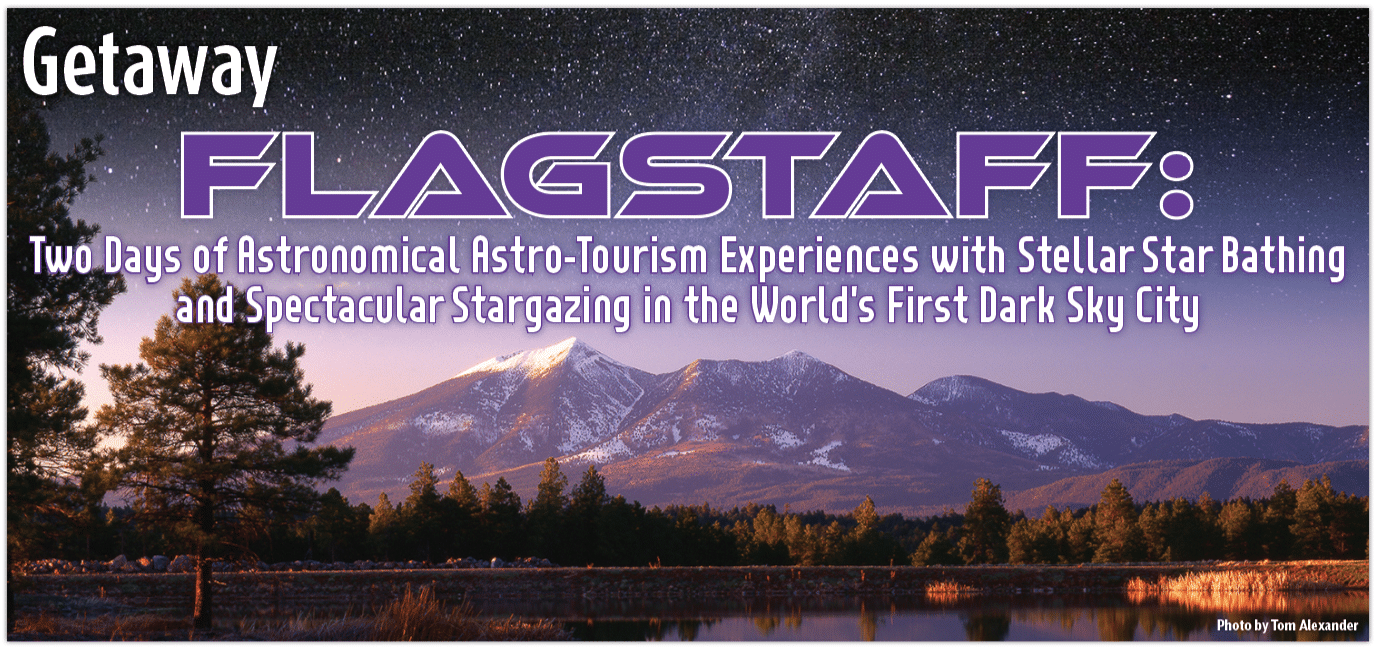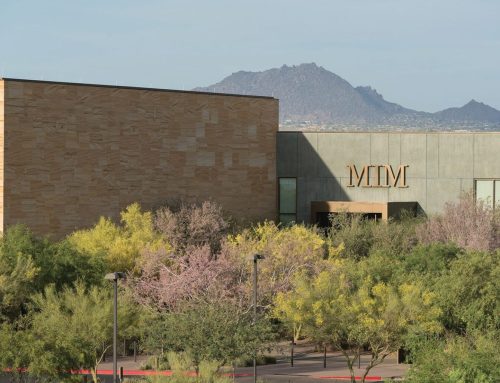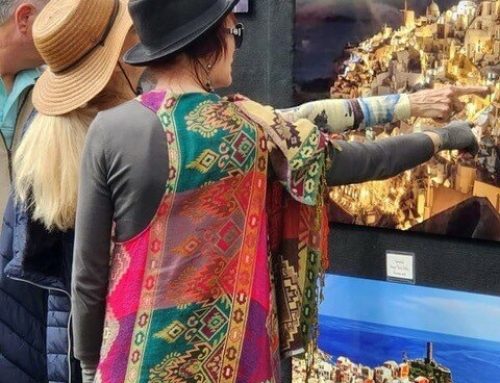Photos courtesy of Discover Flagstaff
Spending time under dark starry skies and appreciating their beauty is a special astro-tourism experience that will leave you dazzled yet calm, inquisitive yet pensive – yep, that’s Flagstaff and star bathing is a real thing. It’s a BYOB (bring your own blanket) event and a time to connect to nature spent outside embracing the moment showered by the twinkling stars of the night skies. Flagstaff is the world’s first international dark sky city designated by the International Dark Sky Association (IDA), home to the discovery of Pluto at the world-famous Lowell Observatory, and all the astronauts that walked on the moon trained in Flagstaff.
Plan a stellar escape full of astronomical adventure with two-days in Flagstaff to take in the cosmos.
Day 1 – STAR BATHING
Celebrate star bathing in Coconino National Forest connecting with galaxies, star clusters, and the Milky Way through darkness. Seek out the stars at Buffalo Park with your night eyes. It takes approximately 10 minutes for eyes to adjust to the night skies. Enjoy a star party with the nonprofit Flagstaff Dark Skies Coalition. Free star parties offer an opportunity to peer through telescopes discovering constellations with expert astronomers sharing cultural astronomy with the mission to promote and protect dark skies. You can even purchase a “Night in Flagstaff” non-fungible token (NFT), log-on at flagstaffdarkskies.org or discoverflagstaff.com to learn more.
Visit Dark Sky Brewery (DSB) for original craft brews, delicious pizza, and starry skies on the recently expanded patio and restaurant. Did you know, Flagstaff is Arizona’s leading craft beer city? Download a Flagstaff Brewery Trail Passport at craftbeerflg.com and take a trek on the Flagstaff Brewery Trail. Visit all eight award-winning breweries and return a completed passport to the Flagstaff Visitor Center and be rewarded with a free commemorative pint glass.
A favorite day-time activity is discovering Flagstaff’s Lunar Legacy with a stop at several astro-tourism sites. Download a Flagstaff Lunar Landmarks Passport at discoverflagstaff.com or pick one up at the Flagstaff Visitor Center. An amazing astro-tourism experience includes Meteor Crater – this place has the world’s largest preserved meteor impact site and it’s another astronaut training location to “moon-boot!”
Day 2 – STARGAZING
Enjoy Grand Canyon National Park, only 80 miles from Flagstaff, where beautiful night skies offer an exceptional quality of starry nights. Arizona boasts 12 dark sky parks designated by IDA with Grand Canyon National Park as the most famous along with Flagstaff’s area national monuments of Walnut Canyon, Sunset Crater Volcano, and Wupatki. Grand Canyon National Park is also a Flagstaff Lunar Landmark because astronauts trained there in the 1960s.
Return to Flagstaff for stargazing re-imaged at Lowell Observatory. Lowell Observatory offers abundant opportunities to experience viewing Flagstaff’s dark skies. The Clark Telescope, Pluto Dome, and the Giovale Open Deck Observatory provide unique telescope programs.
Flagstaff has more than 300 clear nights where the sky is full of stars and star clusters showcasing the Milky Way, Mars, Jupiter, and the Moon. This mountain town at 7,000 feet is out of this world and ready for your discovery. For more information go to discoverflagstaff.com and request a free official visitor guide or stop by the Flagstaff Visitor Center in historic downtown. While visiting, please stay and play responsibly.






